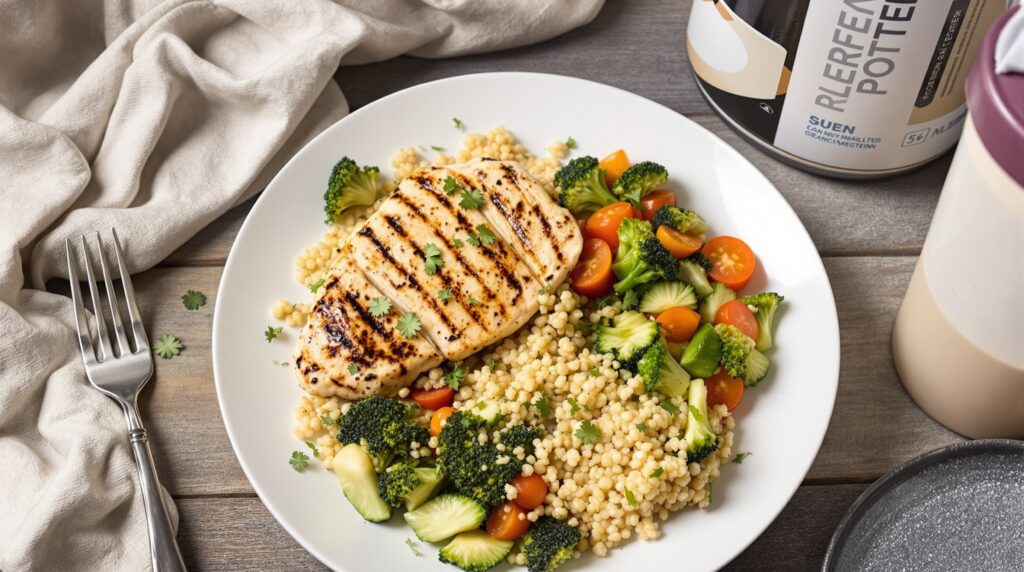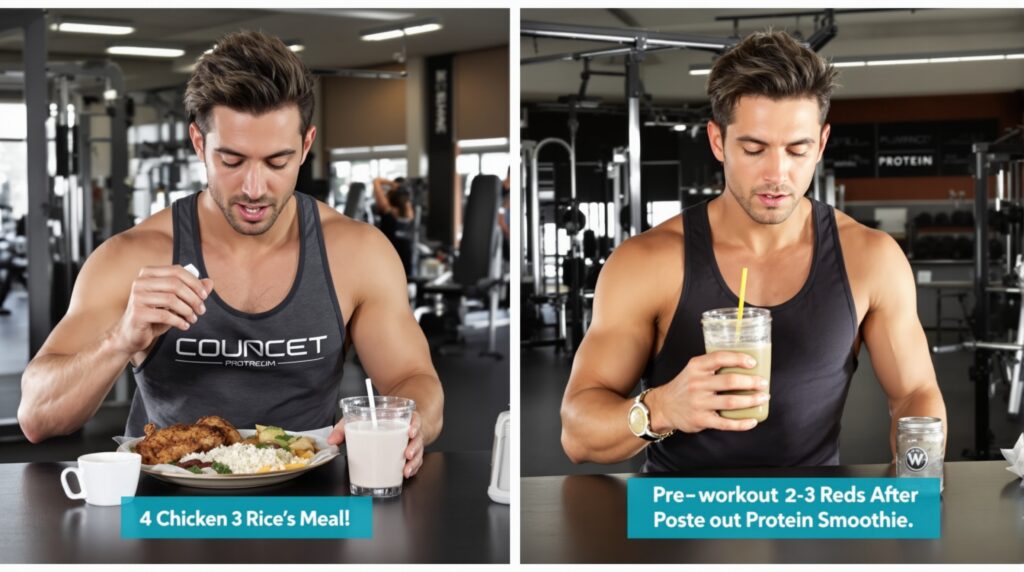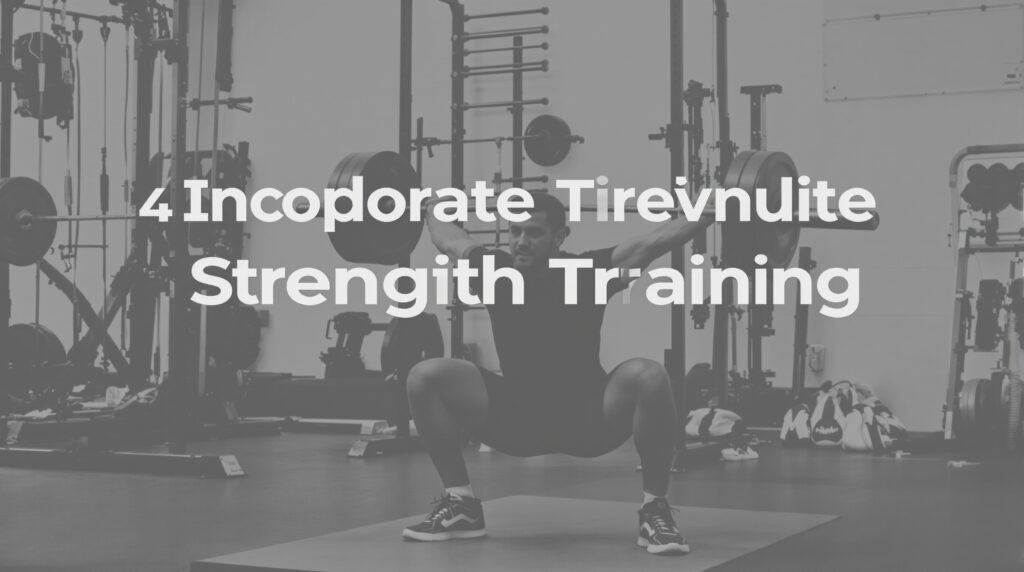10 Proven Strategies to Optimize Your Diet and Gym Routine for Maximum Results
10 Proven Strategies to Optimize Your Diet
Introduction
Achieving your fitness goals requires more than just hitting the gym or eating fewer calories.
A well-optimized diet and gym routine work hand-in-hand to deliver sustainable results, whether you aim to lose weight, build muscle, or boost overall health.
This article outlines 10 proven strategies to supercharge your health journey. Backed by science and practical insights, these tips cater to everyone—from beginners to seasoned fitness enthusiasts.
Let’s dive in and transform your approach to diet and exercise!

1. Set Clear, Achievable Goals
Define specific fitness objectives to guide your diet and gym efforts. Vague goals like “get fit” often lead to frustration.
Instead, aim for measurable targets, such as losing 10 pounds in three months or deadlifting your body weight.
Use the SMART framework (Specific, Measurable, Achievable, Relevant, Time-bound) to structure your goals.
For example, a beginner might target three gym sessions per week, while an advanced athlete could aim to increase their squat by 20 pounds in six weeks.
Write down your goals and track progress weekly. This keeps you motivated and accountable. Apps like MyFitnessPal or a simple journal work wonders.

2. Prioritize Protein in Your Diet
Protein fuels muscle repair and growth, making it a cornerstone of any gym-goer’s diet. Aim for 0.8–1.2 grams of protein per pound of body weight daily, depending on your activity level. For a 150-pound person, that’s 120–180 grams. Include lean sources like chicken breast, eggs, tofu, or lentils in every meal.
Spread protein intake evenly across meals to maximize muscle protein synthesis. A 2020 study in The Journal of Nutrition found that balanced protein distribution enhances muscle recovery compared to skewed intake (e.g., heavy protein only at dinner).

3. Time Your Meals for Performance
Nutrient timing boosts gym performance and recovery. Eat a balanced meal with carbs and protein 2–3 hours before your workout to fuel your session.
For example, a chicken and quinoa bowl with veggies works well. Post-workout, consume a protein-carb combo within 30–60 minutes to replenish glycogen and repair muscles. A smoothie with whey protein and a banana is a quick option.
Don’t obsess over strict timing, but consistency matters. Adjust based on your schedule—morning exercisers might prefer a light pre-workout snack.

4. Incorporate Strength Training
Strength training builds muscle, boosts metabolism, and enhances overall health. Aim for 3–5 sessions per week, targeting all major muscle groups (legs, back, chest, arms, core).
Compound lifts like squats, deadlifts, and bench presses maximize efficiency by working multiple muscles simultaneously.
Beginners should start with bodyweight exercises or lighter weights to master form. Gradually increase resistance to avoid plateaus. According to the American College of Sports Medicine, strength training improves bone density and reduces injury risk.
5. Balance Macronutrients
A balanced diet includes proteins, carbohydrates, and fats in the right proportions. A general guideline is 40% carbs, 30% protein, and 30% fats, but adjust based on your goals. For example, endurance athletes may need more carbs, while those cutting fat might lower carbs and increase protein.
Choose complex carbs (oats, sweet potatoes) and healthy fats (avocado, nuts) to sustain energy. Avoid overly restrictive diets, as they’re unsustainable and may harm long-term health.
6. Stay Hydrated
Dehydration impairs gym performance and recovery. The National Academy of Medicine recommends about 3.7 liters of water daily for men and 2.7 liters for women, including fluids from food. During workouts, sip water every 15–20 minutes. For intense sessions lasting over an hour, consider electrolyte drinks to replace sodium and potassium.
Track your hydration by checking urine color—pale yellow indicates good hydration. Proper hydration supports muscle function and reduces fatigue.
7. Use Progressive Overload
To build strength and muscle, gradually increase the challenge in your workouts. Progressive overload means increasing weight, reps, or intensity over time. For example, if you squat 100 pounds for 10 reps this week, aim for 105 pounds or 12 reps next week.
Track your lifts to ensure steady progress. Avoid jumping weights too quickly to prevent injury. A 2019 study in Sports Medicine confirmed progressive overload as key to muscle hypertrophy.
8. Rest and Recover
Rest is as crucial as exercise. Muscles grow during recovery, not during workouts. Schedule at least 1–2 rest days per week and prioritize 7–9 hours of sleep nightly. Sleep enhances muscle repair, hormone balance, and mental focus.
Incorporate active recovery, like light yoga or walking, to boost circulation without overtaxing your body. Overtraining leads to burnout and injury, so listen to your body’s signals.
9. Supplement Wisely
Supplements can enhance your diet and gym routine, but they’re not magic. Stick to evidence-based options like:
- Whey Protein: Convenient for meeting protein goals.
- Creatine Monohydrate: Boosts strength and muscle growth (5 grams daily).
- Multivitamins: Fill nutrient gaps if your diet lacks variety.
Consult a doctor before starting supplements, especially if you have health conditions. Avoid unverified products promising quick results, as they may violate Google’s quality guidelines.
Read about safe supplementation at WebMD.
10. Track and Adjust Your Plan
Regularly assess your diet and gym progress. Use a fitness app or journal to log workouts, meals, and body metrics (e.g., weight, body fat percentage). Review every 4–6 weeks to identify what’s working. For example, if you’re not gaining muscle, increase calories or adjust training volume.
Stay flexible—plateaus happen. Tweak your plan based on data, not frustration. Consistency and adaptability lead to long-term success.
Conclusion
Optimizing your diet and gym routine doesn’t require drastic measures—just smart, consistent strategies. By setting clear goals, prioritizing nutrition, and training effectively, you’ll see lasting results. Start with one or two of these tips and gradually incorporate more. Your health journey is unique, so experiment, track, and adjust to find what works best for you. Ready to transform your fitness? Begin today!
Call-to-Action: Share your favorite tip in the comments or start tracking your progress with a fitness app. Let’s get healthier together!
FAQs
Q: How long does it take to see results from a new diet and gym routine?
A: Most people notice changes in energy and strength within 2–4 weeks. Visible results, like muscle gain or fat loss, typically take 8–12 weeks with consistency.
Q: Can I optimize my routine without supplements?
A: Absolutely! Whole foods provide most nutrients needed for fitness. Supplements are optional for convenience or specific goals.
Q: How do I stay motivated?
A: Set small milestones, celebrate progress, and mix up workouts to keep things fun. Partnering with a workout buddy also boosts accountability.


